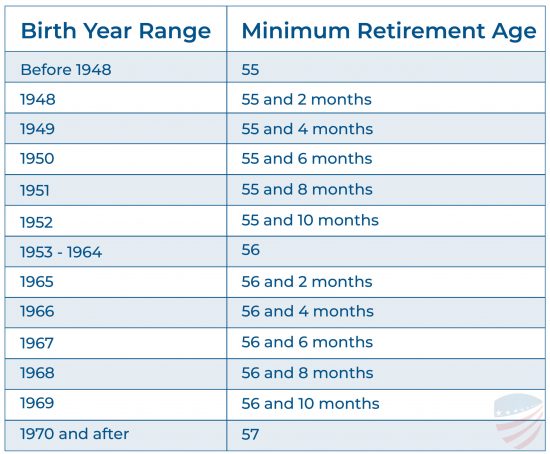“When determining creditable service for determining what my FERS annuity will be, can unused sick leave be used to get creditable service time from 20 years of service? For example, if I work 19.5 years and have 6 months of work unused sick leave, then can I insist that my annuity be 20 years so that my annuity is calculated as 1.1% per year? Thanks” – Robert.
The biggest mistake we see Federal Employees make when planning their retirement is not understanding their Creditable Service
We have helped hundreds of federal employees retire from the federal government, and the most consistent mistake we see is when federal employees need help understanding their creditable service correctly.
Those who are unable to understand how to calculate their eligibility with creditable service could find themselves either ineligible for retirement OR with a grossly miscalculated pension.
Robert’s question about how his unused sick leave is used to calculate retirement helps us illustrate the importance of understanding how the multiple components surrounding your benefits have to work in concert with one another.
There are two aspects of Robert’s question that we need to identify:
- His eligibility for retirement under FERS.
- His creditable service.
Meeting the Basic Eligibility Requirements to retire under FERS
Age Requirement: The minimum age for immediate retirement under FERS is generally 55 to 57, depending on your year of birth. However, there are exceptions for certain occupations that allow for earlier retirement. For example, law enforcement officers, firefighters, and air traffic controllers may be eligible for early retirement as early as age 50.
Service Requirement: To be eligible for retirement under FERS, you must have completed a certain number of years of creditable service. For most federal employees, the minimum requirement is 5 years of creditable civilian service. However, to receive an immediate annuity, you generally need to have at least 30 years of service, reach your Minimum Retirement Age (MRA), or have 20 years of service at age 60.
(Special Provisions: Certain occupations, such as law enforcement officers, firefighters, and air traffic controllers, have special provisions that allow for earlier retirement and enhanced benefits. These provisions take into account the physically demanding nature of these jobs and provide additional flexibility for retirement.)
Calculating Your Retirement Benefits
Determining your eligibility is just the first step. You also need to understand how your retirement benefits will be calculated. The FERS retirement benefits consist of three main components:
FERS Annuity: The FERS annuity is the foundation of your retirement benefits. It is based on a formula that takes into account your years of service and your High-3 average salary. The High-3 average salary is calculated by averaging your highest three years of salary within the last ten years of service.
- Meeting the Minimum Service Requirements
To be eligible for retirement as a federal employee, you must have completed a minimum number of years in creditable civilian service. The precise requirements vary depending on the retirement system you are enrolled in, such as the Federal Employees Retirement System (FERS). Typically, federal employees under FERS need to accumulate at least five years of creditable service to be eligible for retirement benefits.
- Age and Retirement Eligibility
Apart from meeting the minimum service requirements, age also plays a significant role in determining retirement eligibility. The specific age thresholds depend on the retirement system in which you are enrolled, specifically the Federal Employees Retirement System (FERS). Attaining the Minimum Retirement Age (MRA) is essential to qualify for immediate retirement under FERS. The table below illustrates the Minimum Retirement Ages based on birth year:

Have military time? How does that work?
A Step-by-Step Guide to Buying Back Military Time under FERS
If you are a federal employee covered under the Federal Employees Retirement System (FERS) and have served in the military, you may have the opportunity to buy back your military time to enhance your retirement benefits. Buying back military time allows you to credit that service towards your FERS retirement, potentially increasing your years of service and your retirement annuity. In this step-by-step guide, we will walk you through the process of buying back military time under FERS.
Step 1: Determine Your Eligibility
Before proceeding with buying back your military time, it’s important to determine your eligibility. Generally, you are eligible to buy back your military service if:
You are currently employed under FERS.
You have performed honorable active duty service in the military.
You have not already received credit for your military service in another retirement system.
Step 2: Calculate the Cost
The next step is to calculate the cost of buying back your military time. The cost is based on a percentage of your military base pay, plus interest. To determine the cost, you can request an estimate from the Defense Finance and Accounting Service (DFAS) or use the online Military Service Earnings/Buy Back Estimator tool provided by the Office of Personnel Management (OPM). This calculation will give you an estimate of the amount you need to pay to buy back your military service.
Step 3: Complete Form SF-3108
To initiate the process of buying back your military time, you need to complete Form SF-3108, Application to Make Service Credit Payment. This form is available on the OPM website. Fill out the form accurately, providing your personal information, military service details, and any other required information. Review the form carefully to ensure accuracy and completeness.
Step 4: Obtain Military Service Records
To support your application, you will need to obtain your military service records. These records include your DD Form 214, Report of Separation, or equivalent documents that verify your military service, such as retirement points statements or discharge papers. Contact the National Personnel Records Center (NPRC) or visit their website to request your military service records.
Step 5: Submit the Application
Once you have completed Form SF-3108 and gathered your military service records, it’s time to submit your application. Make a copy of the completed form and all supporting documents for your records. Send the original application and supporting documents to your agency’s human resources or personnel office. Ensure that you keep a copy of the submission for your records, including any proof of delivery or tracking information.
Step 6: Payment and Reimbursement
After submitting your application, you will receive a bill from the appropriate agency for the cost of buying back your military time. Pay the bill promptly to complete the process. Note that interest accrues on the unpaid balance until it is paid in full. Once you have paid the required amount, retain a copy of the payment receipt for your records.
It’s important to note that once your military service credit payment is processed, your retirement annuity will be adjusted accordingly, considering the additional years of credited service.
Step 7: Update Your Service Record
After completing the process and receiving confirmation of your military service credit payment, it’s crucial to ensure that your service record is updated accordingly. Verify with your agency’s human resources or personnel office that your military service has been properly credited in your personnel record and retirement calculations.
If Robert has reached his Minimum Retirement Age (MRA) he now needs to determine if he has enough credible service.
Credible Service
Credible service refers to the period of time that is considered valid and qualifying towards retirement benefits. In the context of federal employment, credible service typically refers to the duration of employment that is recognized by the retirement system, such as the Federal Employees Retirement System (FERS) or the Civil Service Retirement System (CSRS).
For federal employees under FERS, credible service includes periods of actual employment in a federal civilian position, as well as certain types of service that can be credited towards retirement, such as military service, prior federal service, and other eligible types of service.
It’s important to note that not all periods of employment or service may be considered credible service. For example, certain temporary or non-qualifying positions may not be credited towards retirement benefits. Additionally, certain types of service may require specific conditions or additional payments, such as buying back military time, to be considered credible service.
Accumulating credible service is essential for federal employees as it directly affects retirement eligibility and the calculation of retirement benefits. The length of credible service plays a significant role in determining the level of retirement income and other benefits that an individual may be entitled to upon retirement.
In summary, credible service refers to the valid and qualifying periods of employment and service that are recognized by the retirement system and contribute to the calculation of retirement benefits for federal employees. It is important for federal employees to understand and track their credible service to ensure accurate retirement calculations and plan for a secure financial future.
Sick leave cannot make you eligible for retirement.
Robert has around 6 months of unused sick leave. Because Congress cured the FERS Flu in 2010 (eliminating the “flu” that most federal employees were plagued with during the year before they retired and their sick leave was “use or lose”), Robert DOES get to include his unused sick leave towards his years of creditable service.
One more time because it is important and really easy to miss. Robert needed to qualify for an immediate retirement under FERS, first.
Questions like this? Ready to speak with someone one on one?



